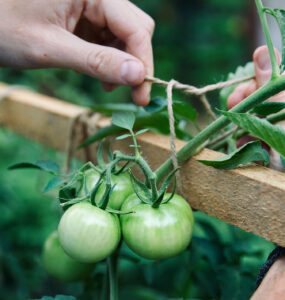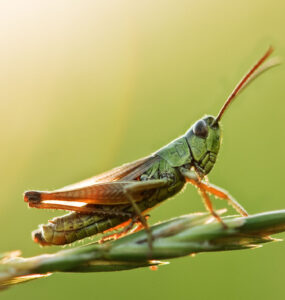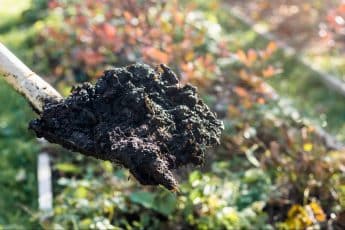All About Juniper-Hawthorne Rust
by Rob Sproule
While wet weather makes for lush gardens, it can also create the perfect conditions for some bizarre and unsightly garden problems. If you’ve seen alien looking, orange tentacles blobs sitting in your junipers or cedars, you know what I’m talking about.
Concerned gardeners are bringing scores of samples and stories of Juniper-Hawthorne rust into the greenhouse daily. It’s a fungal disease that, while not fatal to infected plants, does make certain plants look like they’ve been “slimed.”
Its Life Cycle
Juniper-Hawthorne rust is closely related to Cedar-Apple rust; the only thing that really differentiates them is the plants they infect. They need two specific hosts to complete their two year life cycle.
If your junipers are infected (or your cedars with Cedar-Apple), you would have noticed gelatinous orange blobs hanging off the branches in June. They look like orange octopuses, with slimy tentacles (called teliohorns) dangling from the main gooey mass.
Each teliohorn has thousands of spores inside of it just waiting to catch a ride on the breeze and ride through the garden. When they mature in mid summer, the dispersing spores can only latch on to a specific secondary host.
In the case of Juniper-Hawthorne rust, the spores travel from their primary host (junipers) to their secondary hosts (hawthorne, mountain ash, and apples). With Cedar-Apple rust, the spores travel from cedars to apples, mountain ash, pears, and saskatoons.
The secondary hosts don’t acquire the gelatinous teliohorns. They get rust spots on their leaves that are orange with dark red to black centers. In the late summer, a different kind of spore blows from the secondary host back to the primary, where it lurks over winter until it can re-emerge in the spring.
Damage and Prevention
The good news is that this disease, thought disgusting, won’t cause significant damage to your juniper. The bad news is that if it hits your apple trees hard it can lead to significant defoliation and a reduced fruit yield.
There is no magic bullet. The disease starts as a gall on juniper or cedar stems in the late summer. From there, the jelly tentacles won’t emerge till the next spring so you have time to cut it out. If you or your neighbours have had the disease, look for a brown-orange gall on your evergreen stems in late summer.
Whether you can catch the growing gall or find the unmistakable orange blob the next spring, it’s important to remove the growth before it spores and damages the secondary hosts. Cut all infected branches 8 inches from the growth. Burn the fungus and disinfect your tools with a light bleach solution.
If it’s already on your apples, Hawthorne, and ash trees, remove as many infected leaves as feasible. The fewer leaves there are, the fewer spores will find their way back to the primary host to continue the life cycle. As a precaution, if you find the orange blobs you could sprinkle some sulphur dust on the leaves.
The best defense is to keep the primary and secondary hosts separate. If you’re in the midst of planning your yard, consider leaving some distance between these varieties.
As this is our third rainy spring, I consider this fungus well established. While you’ll see more of it on rainy years and less on dry years, it’s here to stay so the best offense you have is to learn how to identify it early and keep it off your deciduous trees.
















